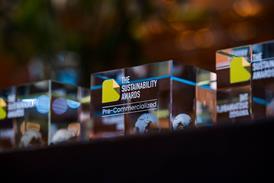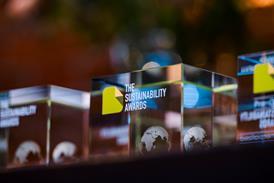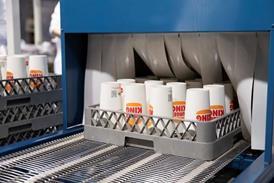
This content was originally sent to Packaging Europe members in The Bulletin – a weekly newsletter that includes articles like this, as well as lots more original content. To receive a brand-new edition of The Bulletin every week, plus an exclusive range of reports, briefings and events, click here to become a member.
GLP-1s – glucagon-like peptide-1 receptor antagonists, more widely known by brand names like Ozempic – started life as injectable medications to help Type 2 diabetics regulate their blood sugar. Now their appetite-suppressing properties have taken off as a treatment for weight loss, with one in eight American adults thought to have taken a GLP-1 drug as of May 2024.
What does this have to do with packaging, I hear you ask? The answer depends on the sector in question. One might draw an obvious connection to the pharmaceutical space, where new opportunities have arisen to capitalize on GLP-1 injectors and cold chain delivery solutions. Unfortunately, though, the forecast is not so straightforwardly lucrative elsewhere.
Simply put, the ever-increasing number of users creates a market of less hungry consumers. Households with at least one GLP-1 user are believed to spend between 6% and 9% less on groceries, depending on their income, and experts forecast a $60-90 billion decline in food shop spending among the US population by 2031. Similar impacts could be felt elsewhere as GLP-1s become cheaper and begin to enter new global markets.
Processed foods are likely to bear the brunt of more health-conscious diets. Research from Circana indicates that frozen goods experience a three-point decline in consumption within the first year of GLP-1 usage, while deli foods and produce increase in popularity (although this may be little comfort for those affected by the PPWR’s ban on single-use packaging for <1.5kg fruit and vegetables).
Food packaging is bound to feel the ripple effect of lower product sales, with declining product volumes likely to reduce demand for their corresponding containers. Furthermore, the FMCG sector is starting to brace itself for an uptick in smaller servings; Nestlé recently tailored a portion-aligned product line to the appetites of consumers on weight loss medication. One can imagine that packs will get smaller, too.
Speculation around these trends goes deeper still, and their true impact will become clearer with time. As they do so, I am interested in observing their implications for sustainability in the packaging space.
Businesses could link an increasing interest in health and wellness to the demand for environmentally conscious packaging and design sustainability-minded solutions. Alternatively, it’s still pharma and there are safety and hygiene concerns at play, so maybe hard-to-recycle SUPs aren’t going anywhere anytime soon.
If you liked this story, you might also enjoy:
The ultimate guide to the Packaging and Packaging Waste Regulation in 2025
How are the top brands progressing on packaging sustainability?
Everything you need to know about global packaging sustainability regulation in 2025
The key to increasing the use of reusable packaging in supermarkets
















No comments yet